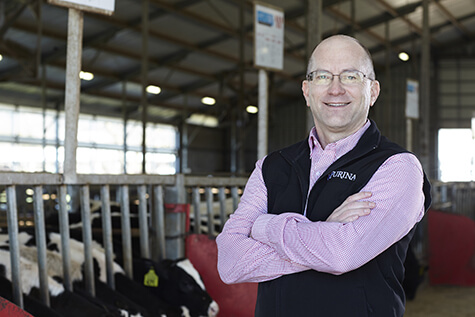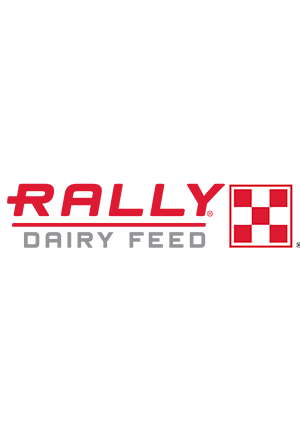
Three Steps to Reduce Heat Stress Effects on Reproduction in Dairy Cattle
Cow : Heat Stress
When warm weather sets in, both milk production and reproduction rates drop.
Consider these three steps to identify signs of heat stress in cattle and help maintain reproduction through high temperatures and humidity.
Measuring the Temperature-Humidity Index (THI):
How: Work with your Purina® expert and use thermometer and hygrometer to measure the THI in your barn to know when your cows may be experiencing heat stress.Step 2: Understand the effects of heat stress on dairy cattle
Understanding how heat stress can affect your herd is the first step in stopping the summer slump.
Previously, researchers believed heat stress began at a THI of 72. Now we know from recent studies that:
1 Purwanto, B.P., Y. Ab, R. Sakamoto, R. Furumoto, and S. Yamamoto. 1990. Diurnalpatterns of heat production and heart rate under thermoneutral conditions in Holstein Friesian cows differing in milk production. J. Agric. Sci. 114:139-142.
Consider these three steps to identify signs of heat stress in cattle and help maintain reproduction through high temperatures and humidity.
Step 1: Measure dairy cow heat stress
When the summer heat spikes, it’s important to measure air temperature and humidity in your facilities to know when heat stress may be occurring. Early intervention can help keep reproduction levels and milk production from dropping.Measuring the Temperature-Humidity Index (THI):
- Calculates heat stress in dairy cattle by measuring air temperature and relative humidity.
- Allows you to estimate your herd’s cooling requirements.
How: Work with your Purina® expert and use thermometer and hygrometer to measure the THI in your barn to know when your cows may be experiencing heat stress.
Step 2: Understand the effects of heat stress on dairy cattle
Understanding how heat stress can affect your herd is the first step in stopping the summer slump.Previously, researchers believed heat stress began at a THI of 72. Now we know from recent studies that:
- Reproduction issues from heat stress begin at a THI of 551(Figure 1).
- Milk production is affected at a THI of 682.
- Pregnancy loss and longer gaps between heat cycles are common3.
- Dry cows and their offspring can see long-term negative effects4.
Step 3: Monitor THI
To help maintain reproduction rates and milk production, consider implementing these steps to reduce heat stress in dairy cattle:- Conduct a facility and management audit to identify areas for improvements to help cows cope with heat stress and keep THI levels low.
- Adjust rations to meet increased energy requirements.
1 Purwanto, B.P., Y. Ab, R. Sakamoto, R. Furumoto, and S. Yamamoto. 1990. Diurnalpatterns of heat production and heart rate under thermoneutral conditions in Holstein Friesian cows differing in milk production. J. Agric. Sci. 114:139-142.
2 Purwanto, B.P., Y. Ab, R. Sakamoto, R. Furumoto, and S. Yamamoto. 1990. Diurnalpatterns of heat production and heart rate under thermoneutral conditions in Holstein Friesian cows differing in milk production. J. Agric. Sci. 114:139-142.
3 Garcia-Ispierto et al., 2006
4 do Amaral, B.C., E. E. Connor, S. Tao, J. Hayen, J. Bubolz, and G. E. Dahl. 2009. Heatstress abatement during the dry period: Does cooling improve transition into lactation? J. Dairy Sci. 92:5988-5999.





